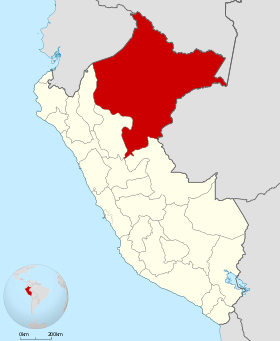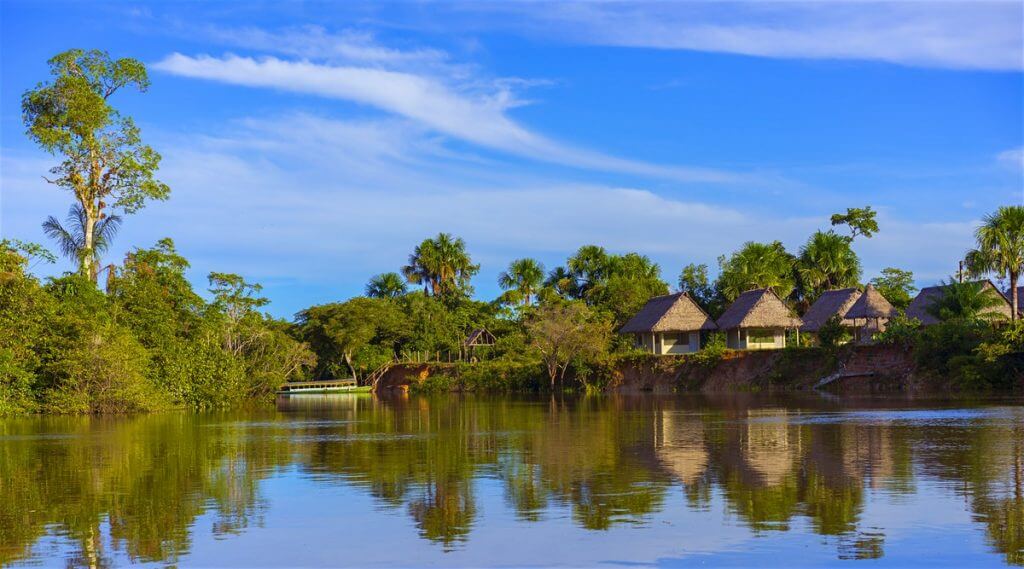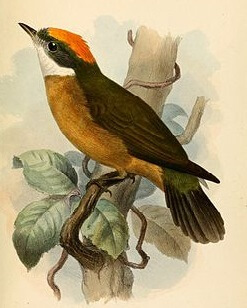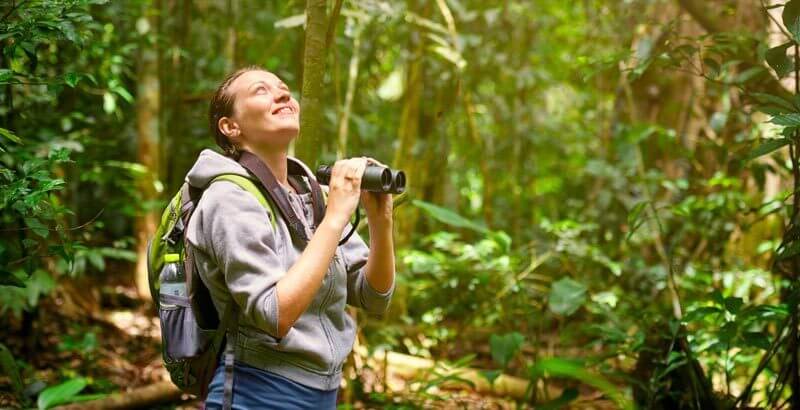Birds surrounding Iquitos city
Peru is well-known for being one of the richest countries in biodiversity of birds of the world, perhaps the first one. Depending of the taxonomic point of view of who compiles the lists of species it would rank in the first place with more than 1,800 species, according to Clements and Shany (“A Guide to the Birds of Peru”) or in the second place, after Colombia. Traditionally, bird-watchers in Peru have emphasized some of the “hot spots”: the northwest dry forest, the Paracas National Reserve, the Tambopata, Manu or Cosñipata Valley. The world record for bird-watching in a single day (331 speciess) was registered in Cocha Cashu, at the Manu National Park. Tambopata and Manu also compete for the world record of birds registered for a locality, with 527 and 569 species repectively in an area of a few tens of hectares.

Let us explain why the North Peruvian Amazonia, a region that remains poorly studied by scientists compared to others, and little promoted by tourism agents in the bird-watchers market, is one of the richest bird regions in the world. Although at no particular locality in North Peruvian Amazonia sampling efforts equal to those in Tambopata and Manu, the total number of species for a region of similar area is significantly higher: According to the information given by professor Haven Wiley of the University of North Carolina, who has compiled all the records of collected, seen or registered birds around Iquitos city made by numerous scientinsts who have visited the region over the las 150 years, this is the Mecca of world ornithological diversity: more than 780 species of birds, almost one out of every twelve birds in the world, can be seen in this area. Few places in the world can boast such high figures. And this is but one of many biogeographical provinces of tropical wet forest and flood plains with habitats between 68 and 124 meters above sea level.

The exceptional richness of birds is not an isolated fact, because also in this area we can find world records of reptiles (194 species); amphibians (186 species); primates (about 22 species around Iquitos city, compared to just a dozen in the South over a similar area) and plants (about 300 species of over-10 cm-diameter trees per hectare, can be found in the forest near Iquitos city, compared with about 180 species in a similar forest in Madre de Dios of Central Amazonia). Many of these species have a very limited distribution or are endemic to this region, some ecologist call the Napo Ecoregion because the basin of this and other most remarkably at least 3 primate species, more than a dozen birds, several tens of amphibians, little mammals, fishes and several hundreds of invertebrates and plants.
Special features of the Region Around Iquitos city
The North Peruvian Amazonia is not only unique because of the richness in species but also for the ecological heterogeneity of habitat diversity, perhaps the reason for its extraordinary biodiversity. Recent studies have shown that tens of kinds of forests, different in species composition, in particular of plants and some animal groups, among them birds, can be found in a few miles journey where until recently just three or four kinds of different forests could be recognized. This is also a border area, where there are communities of plants and typical animals from ecosystems associated with the Andes and associated with old mountain formations of the Guyana Shield in Brazil, as well as communities in the North and South of the great bio-geographic barrier of the Amazon and its floodplain.
With respect to birds, this region is a trysting point of bird faunas of various origins and with requirements of different habitats: there are specialist birds groups associated with different kinds of forests that grow in several soils. Standing out amongst them are those growing in white sand, forests on richer non floodable lands, white water floodplain or varzea florests, black water floodplain or igapo forests, plant formations associated with fluvial islands, bogs of palm trees, herbaceous bogs, shrub-like bogs, bamboo-dominated forests, and many more.
In the specialist bird groups related to very specific habitats, and which significantly contribute to the richness of regional bird fauna, stand out those associated with river islands and the riverbanks of the Amazon and main affluents, about 25 species; those linked with white sand or varillal forests, about 30 species; and those associated with bogs and different kinds of aquatic habitats, more than 60 species.
This region has a great potential for bird tourism, because it is part of the Northem Bird Route, the world’s richest bird route (more than 1200 species). Iquitos city has an international airport, and the Allpahuayo – Mishana and the Pacaya – Samiria Reserves are very accessible because of the new asphalt road from Iquitos to Nauta. In few places in the world can a bird-watcher stay in a five-star hotel and visit a forests by road in thirty minutes where five new species of birds have been discovered to science in recent years. Iquitos city may have in the near future an air connection with Miami (nearly 5.5 flight hours) and Europe (nearly 10 hours direct flight Madrid), and this become a choice destination for the beginning or end points of the Northern Bird Route.
Birds to watch in Iquitos area
Endemic species of the Napo Ecoregion – those that cannot be found elsewhere in the world, but bird-watchers can see aroun Iquitos- included Brown Nunlet, Olive-spotted Hummingbird, Black tailed Antbird, Brown backed Antwren, Northern Chestnut-tailed Antbird, Allpahuayo Antbird, Ochre-striped Antpitta, White-lored Antpitta, Orange-eyed Flycatcher, Mishana Tyrannulet, Orange-Crowned Manakin, Golden-winged Tody Flycatcher, Ecuadorian Cacique. A bit farther from Iquitos, in the border with Ecuador, two more species can be found of very limited range of distribution: White-masked Antbird, y Cocha Antshrike.

Other Special Features Around Iquitos
There is a numerous bird group hard to watch elsewhere in Amazonia, though quite common in the Iquitos area, such as Amazonian Parrolet, a species described nearly a decade ago and originally known only in the south east of Peru, Nocturnal Currasow, Point-tailed Palmcreeper, Band-tailed Nighthawk, Long-tailed Potoo, Pied Puffbird, Scarled-shouldered Parrotlet, Orange-fronted Plushcrown, Amazonian Straked Antwren, Pearly Antshrike, Black-crested Antbird, Citron-bellied Attila, White-ringed Flycatcher, Lemon-chested Greenlet, Band-tailed Oropendola, Red-rumped Cacique.

On the other hand, a group of bird species rarely seen in other localities can also be observed in this area though in limited numbers. They include: Roseate Spoonbill, Zig-zag Heron, Rufous Potoo, Long-billed Starthroat, Lanceolated Monklet, Stripe-chested Antwren, Amazonian Umbrellabird, Amazonian Black-Tyrant.
Birds in River Islands
Finally, in transitional islands and forests that are plentiful in the Amazon’s and Lower Napo’s riverbanks, on the other hand, it is easy to watch numerous species associated with theese habitats and those that are not in the basin of smaller Amazon watersheds, such as Watled curassow, Snail Kite, Festive Parrot, Lesser Hornero, White-bellied Spinetail, Parker’s Spinetail, Leaden Antwren, Black-and-white Antbird, Johannes Tody-Tyrant.

